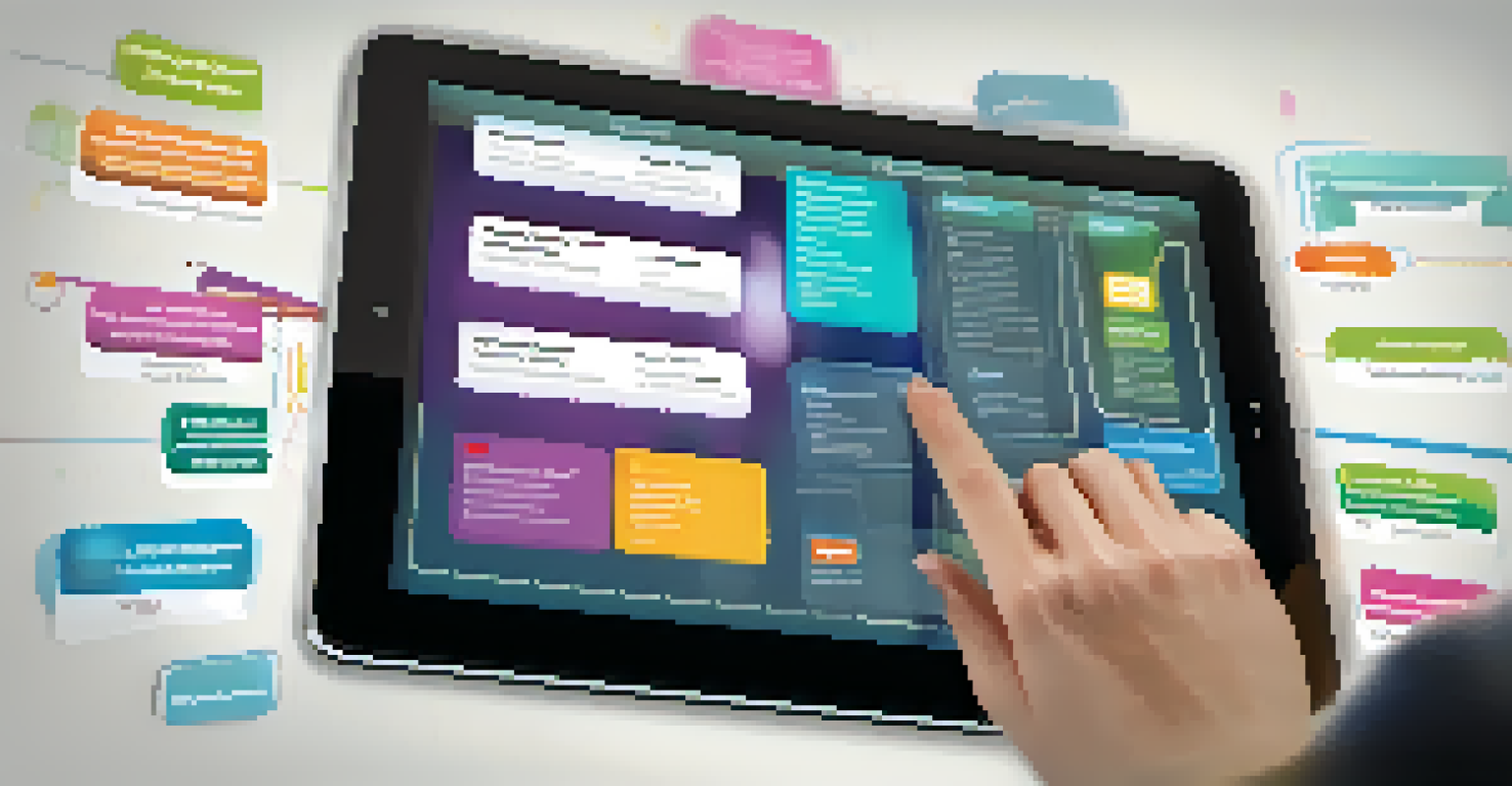Integrating Knowledge Management Systems with Existing Tools

Understanding Knowledge Management Systems (KMS)
Knowledge Management Systems (KMS) are tools that help organizations collect, store, and share information effectively. They serve as a central hub for knowledge, streamlining access for employees and improving overall collaboration. Think of KMS as a digital library where everyone can find the resources they need, when they need them.
Knowledge is power. Information is liberating. Education is the premise of progress, in every society, in every family.
Integrating a KMS with existing tools, such as project management software or communication platforms, enhances its functionality. This integration allows teams to seamlessly access knowledge without switching between multiple applications. It’s like having a universal remote control for all your devices—everything you need is just a click away.
Understanding how KMS works within your organization is crucial for successful integration. By evaluating your current tools and identifying gaps, you can determine how a KMS can fill those needs. This foundational knowledge sets the stage for a smoother integration process.
Identifying Your Existing Tools and Needs
Before diving into integration, it's essential to take stock of the tools currently in use. This includes everything from email clients to customer relationship management (CRM) systems. Understanding what's already in place helps ensure that the KMS complements rather than complicates existing workflows.

Consider conducting a survey or holding meetings with team members to gather feedback on the tools they use. This input can highlight pain points and areas for improvement. By involving employees, you can create a more tailored integration strategy that meets their needs.
KMS Enhances Information Sharing
Knowledge Management Systems streamline access to information, improving collaboration within organizations.
Once you've identified existing tools and gathered insights, map out how a KMS can enhance these systems. For instance, integrating a KMS with your project management tool can allow team members to access relevant documents directly within their project dashboards. This streamlining can save time and boost productivity.
Choosing the Right KMS for Your Organization
Not all knowledge management systems are created equal, so choosing the right one is crucial. Assess your organization's size, structure, and specific needs to find a KMS that fits well. Some systems may offer advanced features that are unnecessary for smaller teams, while others might lack essential capabilities for larger organizations.
The greatest danger in times of turbulence is not the turbulence; it is to act with yesterday's logic.
It's also important to consider user-friendliness. A KMS should be intuitive and easy to navigate to encourage widespread adoption. Think about it like picking a smartphone; you want one that everyone in your team can use without extensive training.
Lastly, evaluate the compatibility of the KMS with your existing tools. A well-integrated KMS can enhance functionality and save time, but if it doesn’t work well with your current systems, it can lead to frustration. Make sure to choose a KMS that integrates easily and effectively with the tools your team already loves.
Developing an Integration Strategy
Creating a solid integration strategy is key to a successful KMS rollout. Start by defining clear goals for what you want to achieve through integration. Are you looking to enhance collaboration, improve efficiency, or streamline knowledge sharing? Having specific goals will guide your efforts and ensure everyone is on the same page.
Next, outline the steps needed to connect the KMS with your existing tools. This may involve technical configurations, data migrations, or training sessions for your team. Think of it as mapping out a road trip; you need to know your route and stops along the way to reach your destination smoothly.
Choose the Right KMS Fit
Selecting a KMS that aligns with your organization's size and existing tools is crucial for effective integration.
Finally, consider setting a timeline for your integration process. This helps manage expectations and keeps the project on track. Regular check-ins can help identify any roadblocks early and allow for adjustments to the strategy as needed.
Training and Onboarding Your Team
Once your KMS is integrated, training and onboarding become essential for success. Conduct sessions that familiarize team members with the system and its features. This is similar to a cooking class; the more hands-on experience you provide, the more comfortable everyone will feel using the new tools.
Encourage questions and feedback during the training process. This not only helps clarify doubts but also fosters a sense of ownership among employees. When team members feel engaged, they’re more likely to embrace the new system wholeheartedly.
Additionally, consider creating resources like user guides or video tutorials that employees can refer back to later. These materials can serve as helpful reminders and reduce the frustration that sometimes comes with learning new technology.
Monitoring and Evaluating Integration Success
After implementation, monitoring the effectiveness of your KMS integration is crucial. Set up metrics to evaluate how well the system is being utilized and whether it meets the goals set during the planning stage. This could involve tracking usage rates, feedback from users, and the overall impact on productivity.
Regular evaluations can help you identify areas for improvement. For example, if team members are struggling to find information, it may indicate the need for better categorization or search functionalities within the KMS. Think of this as tending to a garden; regular care ensures everything grows as it should.
Foster a Knowledge-Sharing Culture
Encouraging contributions and recognizing efforts within the KMS cultivates a collaborative environment that drives innovation.
Don't hesitate to make adjustments based on the insights you gather. Continuous improvement is key to maximizing the benefits of your KMS integration, ensuring it evolves alongside your team's needs.
Fostering a Knowledge-Sharing Culture
Integrating a KMS is just the start; fostering a culture of knowledge sharing is essential for long-term success. Encourage team members to contribute their insights and best practices to the KMS. This creates a collaborative environment where everyone feels valued and empowered to share their expertise.
Recognize and reward contributions to the KMS, whether through shout-outs in meetings or formal incentives. This not only motivates individuals but also underscores the importance of knowledge sharing within the organization. It’s like creating a community garden where everyone is encouraged to plant and nourish their ideas.

Lastly, lead by example. When leadership actively uses and promotes the KMS, it sets a tone for the rest of the organization. A top-down approach can inspire a culture where knowledge sharing becomes part of everyday interactions, driving continuous improvement and innovation.